Why Shropshire dairies opted for Euromilk feeder wagons
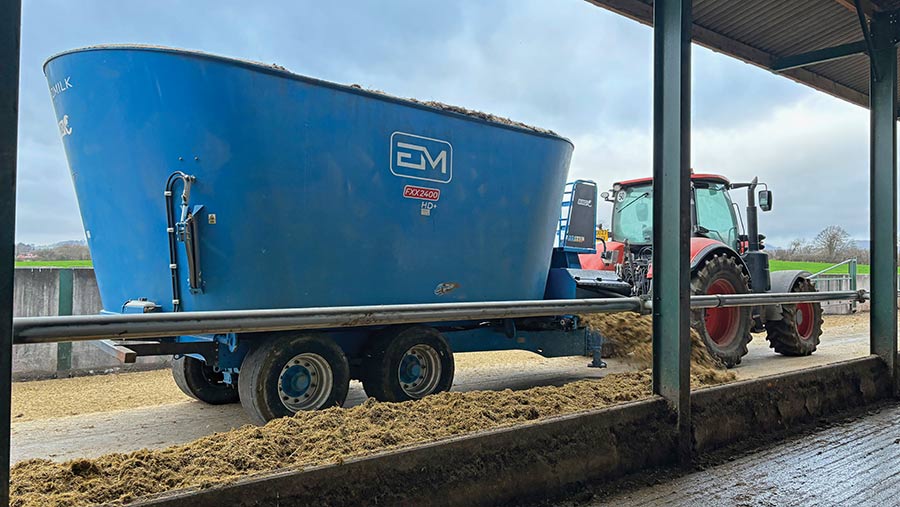 © James Andrews
© James Andrews The diet feeder market might be dominated by a few big names, but those who shop around will discover a bevy of smaller outfits proffering decent machines for a lower outlay.
One of the latest to reach UK shores is Polish brand Euromilk, which is imported by Shropshire engineering outfit HF Evans and Son.
The firm is no stranger to diet feeders, having specialised in servicing, repairing and selling second-hand models for decades.
But the pivot to selling new occurred just last year, when owner Keith Evans heard that some of his customers were experiencing long waiting times for replacements.
See also: Keenan mixer wagon renovator offers repair tips
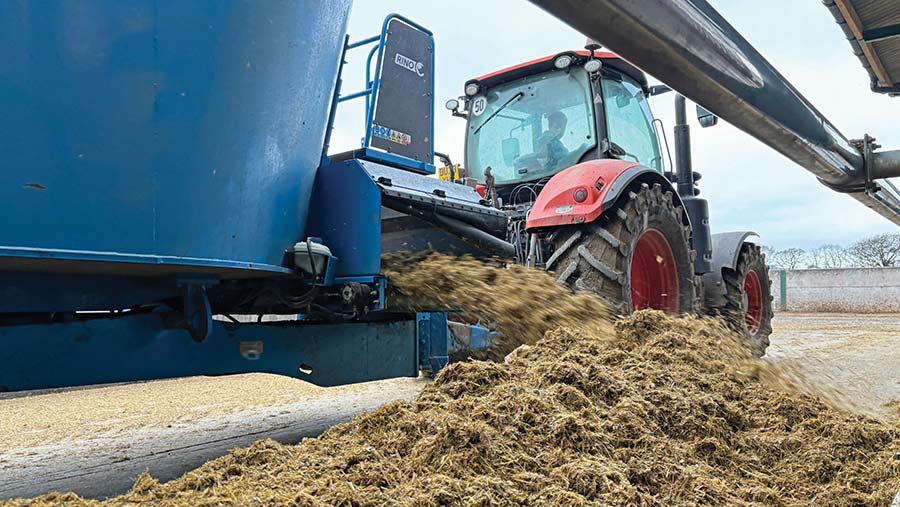
A side-shift elevator dispatches the ration © James Andrews
“I hunted around to see what was on the market, and I really liked the look of Euromilk’s machines,” he says.
A trip to the factory confirmed that they were well built using quality components such as Comer gearboxes, so Keith did a deal to bring the first batch over, along with a tranche of spare parts.
All of these were twin-tub machines with capacities ranging from 18 to 24cu m, but the company has a far broader offering, with capacities running up to 44cu m.
It also makes horizontal mixer wagons, rear-discharge muckspreaders and a host of attachments, including shear grabs and feed pushers.
HF Evans has demonstrators of some of these machines available for customers to try.
Shelbourne Reynolds replacement
The first customers to take delivery of a Euromilk wagon were Powys dairy farmers Alun, Jack, Cary and Jesse Lloyd, who opted for a high-spec Rino FXX2400HD model.
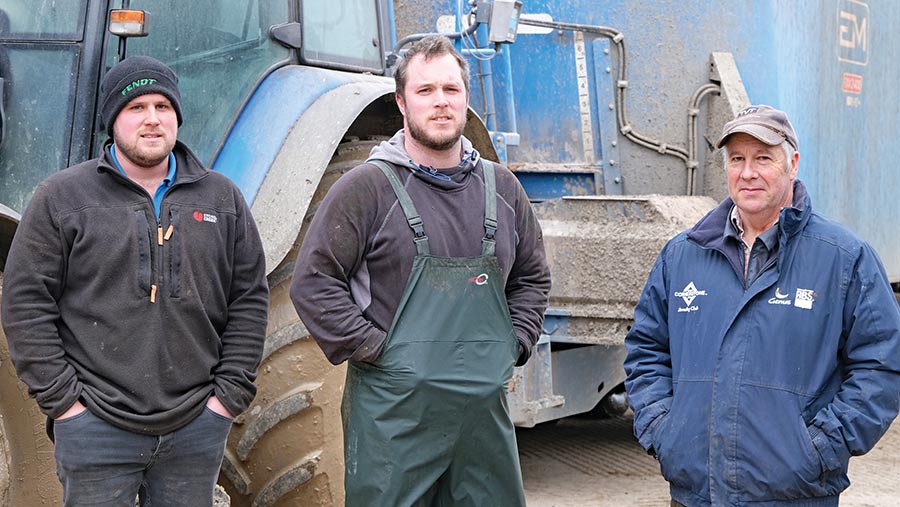
From left: Cary, Jack and Alun Lloyd © James Andrews
This runs on twin axles and has a 24cu m capacity, allowing them to feed their 380 Holstein Friesian and Fleckvieh cows in two loads.
Prior to this, they were running a 19cu m single-axle Shelbourne Reynolds tub mixer. It had been a solid performer, but after 10 years of service it needed some attention, says Alun.
“One option was to ask Keith to give it an overhaul, and we priced up a replacement from Shelbourne Reynolds, but the Euromilk wagon seemed the most cost-effective, long-term move.”
This time, they opted for a bit more capacity and decided twin axles were a must, as they had recently invested in new concrete and wanted to minimise the risk of it cracking by better spreading the weight.
They also chose to have a passive-steering rear axle – which can be locked hydraulically when reversing – to improve manoeuvrability and reduce the amount of tyre scrub.
Controls are high-spec too, with a rechargeable wireless remote from Dinamica Generale that puts all functions on buttons and means just one spool valve set to constant pump is required to run it.
All in, the wagon came to about £61,000, but there have been two price rises since, meaning a comparable model is now more like £65,000.
Cary is the main operator and he says the remote is far nicer to use than pulling manual levers.
Plus, it gives the option of varying the speed of the front feed belt, which is only possible by altering the tractor’s spool valve flow rate on manual versions.
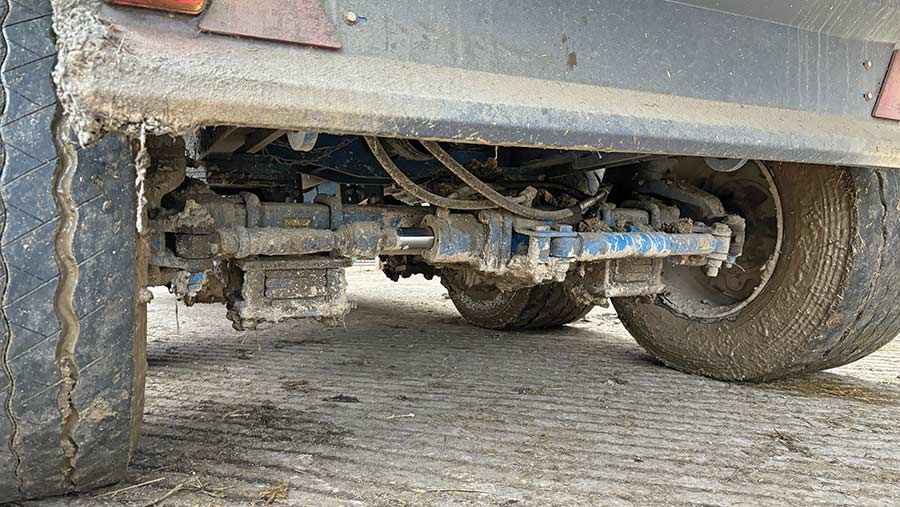
© James Andrews
The Lloyds’ daily dairy ration includes clamped grass silage, crimped maize, oilseed rape meal and wheat, which the wagon can whip into a consistent mix in just a few minutes.
“We’re pleased with the performance and the mixing quality is better than the Shelbourne.
“However, that was an old model and was worn, so it’s not really fair to compare them directly,” says Jack.
For extra chopping power there is a set of hydraulic counter knives, but they only use these on the odd occasion when loading in baled silage.
The wagon also gets used for bulk-mixing youngstock and bull feed, which they offload through the hydraulic rear door into bunkers.
“It’ll wind out a whole load in three to four minutes, which is less than half the time it takes with the front conveyor, plus there’s a lot less wear and tear,” says Cary.
There are no breakdowns to report yet, although Euromilk has given them a replacement remote control after the screen on the original started to bubble.

A rear door allows for faster unloading of bull and youngstock feed © James Andrews
Mixing eight loads a day
The hardest-pushed of the first Euromilk machines is another 24cu m model belonging to Rob Bowdler, who milks 1,400 cows at his main dairy near Shrewsbury, Shropshire.
He bought it after giving up waiting for the vertical twin-tub Keenan machine he’d ordered more than a year before.
The lead time for the Euromilk was just a couple of months, it was cheaper and he knew he’d get good backup.
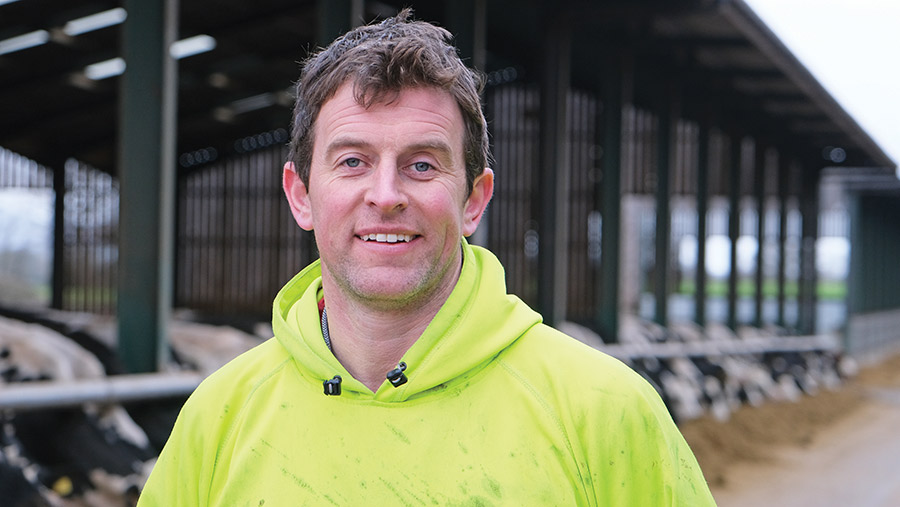
Rob Bowdler © James Andrews
“The fact Keith has faith in the machines also gave me the confidence to try one, as he’s had much experience with diet feeders and knows what to look out for.”
As his wagons have such a heavy workload and are used by multiple operators, Rob likes to keep things simple.
This means his model has minimal electrics, with all hydraulic functions plumbed into individual spool valves and little in the way of extras.
“We can’t afford the downtime if it breaks, so the fewer features it has, the less there is to go wrong. And it cost less,” says Rob.
However, there is one feature that might have been a handy insurance policy – a rear door.
“I know Keith is only down the road and his backup is excellent, but it would be nice to have another way of getting the feed out if we ever have trouble with the front conveyor. It would probably have been worth the extra £1,500.”
That said, he hasn’t had any mechanical problems so far, even though the wagon is working its way through eight loads of dairy ration, comprising blended feed, brewers’ grains, grass silage and maize silage, plus a daily dry cow mix.
The latter tends to contain some straw, which is the only time they engage the hydraulic counter knives.
These chop the courser material more aggressively and help incorporate it evenly into the ration.
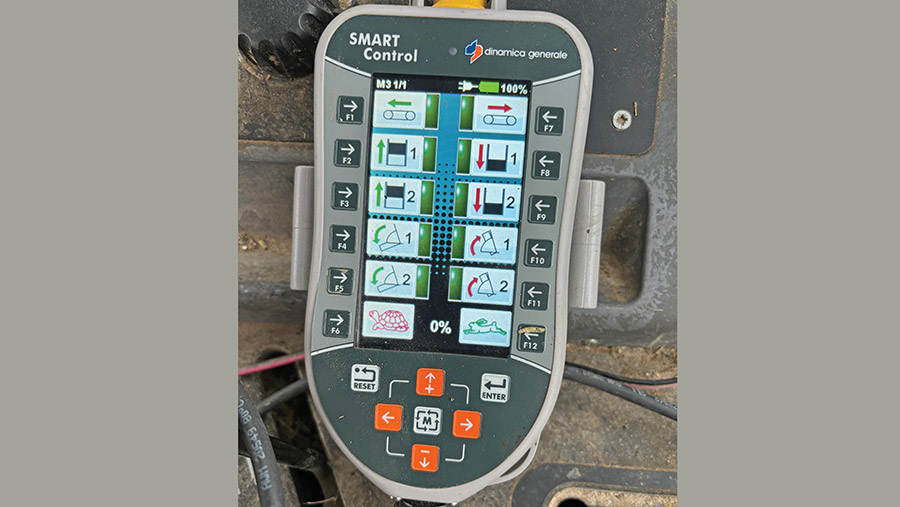
The Lloyds splashed out on a wireless control for easier operation © James Andrews
Mixing time is generally four to five minutes after the last ingredient has been loaded, which is noticeably quicker than his old twin tub.
Rob also runs an 800-cow dairy unit a few miles away – served by a Keenan paddle mixer – and he’s in the process of setting up another one nearby.
As the Keenan doesn’t have the capacity to handle both sites, he’s ordered a second 24cu m Euromilk wagon in the same basic spec as the first.
The only difference is that it will have a side-shifting front conveyor that allows the team to deliver feed into the centre of the 5ft feed bunkers installed at the farm.
“One of the benefits of the Keenan paddle mixers is that the feed chute is higher up, so you can load over taller bunkers and throw the feed a bit further,” says Rob.
“We’ve had to add a bit more complication with the side shift, but it’s worth it for the faster mixing, the fact it’s not so easy to overload, and the durability.”
When Rob purchased his first Euromilk wagon early last year it cost about £53,000, but prices for the same-spec model have now risen to £57,500.

